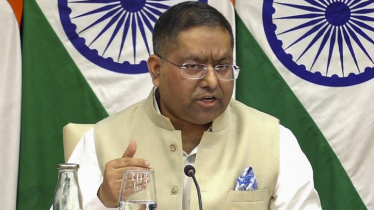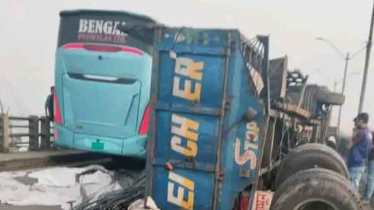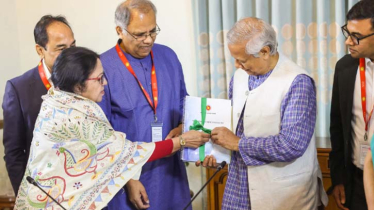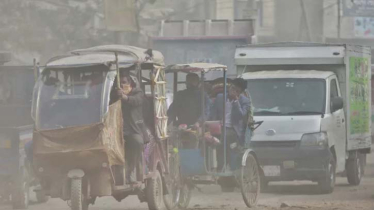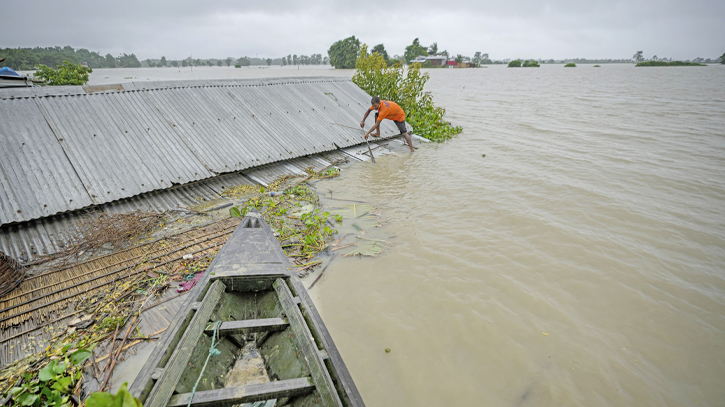
Photo: Messenger
Sudden flooding has occurred in the northern and northeastern regions due to the monsoon and the influence of upstream water from India. For the same reason, flood conditions have emerged in several other areas of the country. Water levels in several rivers have exceeded danger levels.
The weather office has already warned of a potential deterioration in flood conditions within 24 hours. Alert level 3 has been issued in several places across the country. In Sylhet, 7 lakh people are stranded by water in the third round of flooding. In two upazilas of Feni, 10 villages have been inundated due to embankment breaches, and all exams including HSC have been suspended.
700 tourists are stranded in Sajek as roads have gone underwater. There are fears of major flooding footsteps for another two months.
Meanwhile, Prime Minister Sheikh Hasina announced on Tuesday that there is a risk of flooding in the country in August this year. She has instructed everyone concerned to take advance preparations. The Prime Minister gave this directive at the meeting of the Executive Committee of the National Economic Council (ECNEC) on Tuesday, according to a senior secretary who relayed the instructions. The Prime Minister said there is a risk of flooding this time. The impact of rain will be felt. Everyone needs to be prepared in advance to deal with floods.
Upon inquiry, it was learned that there is heavy rainfall in northeast India, especially in Sikkim, Arunachal, Assam, Meghalaya, Tripura, and the Himalayan foothills of West Bengal. As a result, the surge of flood waters from upstream has already increased.
Flood risks have emerged particularly in the northern, north-central, central, northeastern, and southeastern regions. There is a risk of flooding up to the Meghna estuary. This flooding could last for another two months. Sylhet, Sunamganj, and Netrokona districts, as well as areas along the Teesta River, have again been affected by floods. Vast lowlands in various other areas are also being submerged. The suffering of people in low-lying areas has increased. Along with this, there is fear of river erosion due to flooding.
Relevant experts are saying that the flooding that occurs in the country in July, i.e., in the second-third week of Ashar during the peak monsoon season, is a ‘normal seasonal flood’ of medium duration in downstream Bangladesh. However, when India opens dams and barrages upstream to keep themselves flood-free, the flooding becomes extensive.
Due to internal heavy to very heavy rainfall and Tuesday and Monday and the surge of flood waters coming from heavy rainfall in northeast India, five rivers including the Teesta and Surma were flowing above the danger level at six points.
Regarding the river flow situation, Sardar Udoy Raihan, Executive Engineer of the Flood Forecasting and Warning Centre of the Water Development Board (BWDB), informed in a bulletin that the water level of the Brahmaputra-Jamuna rivers is rising and may continue for the next 72 hours. In 72 hours, the water level of the Brahmaputra River may rise and exceed the danger level at several points. The water level of the Ganges-Padma River is stable, which may continue for the next 24 hours. Except for the Kushiyara, water levels in the rivers of the northeastern region of the country are rising.
According to the forecast, heavy to very heavy rainfall is expected in the northern and northeastern regions of the country and the adjacent upstream areas of northeast India in the next 48 hours. As a result, water levels in the rivers of the northern and northeastern regions of the country may rise during this time.
Risk of deteriorating flood situation in 24 hours: The Flood Forecasting and Warning Centre of the Bangladesh Water Development Board has reported that the flood situation may deteriorate in various parts of the country due to excessive rainfall and upstream surge. In a message signed by Executive Engineer Sardar Udoy Raihan, it was stated that the water levels of the main rivers in the northeastern part of the country are generally rising. This may continue for the next 24 hours. In the next 24 hours, the flood situation may deteriorate in some low-lying areas of Sylhet, Sunamganj, and Netrokona districts in the northeastern region.
Heavy rainfall is forecast for the next 24 hours in the northern, northeastern, southeastern regions of the country and the adjacent upstream areas. In the next 24 hours, water levels in the Teesta, Dharla, and Dudhkumar rivers in the northern region may rise and exceed the danger level at some points for a short period. The water level of the Brahmaputra-Jamuna rivers is also rising, which may continue for the next 72 hours. Additionally, the water level of the Ganges-Padma River is rising, which may continue for the next 24 hours. In the next 48 hours, the water level of the Brahmaputra River may rise and exceed the danger level at some points. In the next 24 hours, water levels in the Muhuri, Feni, Halda, Sangu, and Matamuhuri rivers in the southeastern region may rise and flow close to the danger level at times.
Third round of flooding in Sylhet, 7 lakh people stranded: Before recovering from the damage of two previous floods, Sylhet residents have been hit by a third flood in the last 35 days. Due to continuous rain and hill slides, river water has rapidly risen, submerging various parts of Sylhet city and district. Over 7 lakh people are stranded by water, facing extreme hardship. Locals say the flood situation in Sylhet has been caused by excessive rainfall in India's Meghalaya. Hill slides from upstream and continuous rain have again started to increase water levels in all rivers. Already, water has exceeded danger levels at points on four rivers. Road communication between Sylhet and Gowainghat upazila has been cut off.
In Sylhet, water levels in the Surma, Kushiyara, Sari, and Sariganga rivers have rapidly risen, exceeding danger levels at five points. Additionally, water is nearing danger levels at six more points. According to Sylhet district administration, 7 lakh 36 thousand 6 people are stranded by water in the district. 10 thousand 713 people are staying in 219 shelters. However, shelters are prepared for water-stranded people in Sylhet City Corporation and Sadar upazila.
10 villages flooded due to embankment breach in two upazilas of Feni; exams suspended: At least 10 villages have been flooded due to embankment breaches at five points of the Muhuri River in Fulgazi and Parshuram of Feni. In this situation, ongoing HSC and Alim exams scheduled for Tuesday (July 2) have been suspended in Fulgazi and Parshuram upazilas.
Embankment on Muhuri-Kahua soon, says State Minister: State Minister for Water Resources Zahid Faruk has announced that flood control embankment work on the Muhuri-Kahua river will start before the next monsoon season. He said this while inspecting the flood-affected Parshuram and Fulgazi upazilas of Feni on Tuesday afternoon.
Alert level 3 issued: Due to strong monsoon winds, the weather office has instructed to show local alert signal number 3 at the country's four seaports. This information was provided in a warning message signed by meteorologist Shahnaz Sultana on Tuesday.
Jhinaigati submerged: At least 20 villages in low-lying areas, including Jhinaigati town, have become water-logged. Along with this, hundreds of fish farms, ponds, various vegetable fields, and seedbeds have been submerged. Locals complain that illegal occupation of nearly half a kilometre of the Maharshi River area for settlement has reduced the river's navigability, causing the flood situation.
Water rising in Netrokona: Heavy rain and hill slides from upstream are causing water levels to rise in all rivers of Netrokona. The Ubdakhali River in the district is flowing above the danger level. Additionally, water levels are rising in the Ganeshwari, Mahadev, Bakhla, Mangeleshwari, Baithakhali, Kangsa, Someshwari, and Dhanu rivers. This is causing flooding in low-lying areas of seven unions in the upazila.
High risk of erosion in Daulatdia: With the Padma River's water level starting to rise, erosion has occurred in the Daulatdia ferry ghat area of Goalanda in Rajbari. In the past week's erosion, about 200 meters of area near Ghat No. 7 have been swallowed by the river. Ferry ghats 6 and 7 in Daulatdia, along with nearly 300 families and a government primary school near the ghat, are at risk of erosion.
700 tourists stranded in Sajek as road goes underwater: 700 tourists have been stranded while traveling to Sajek Valley. On Tuesday morning, the Baghaichhari-Bagaihat road was submerged by hill slides from upstream. As a result, tourists in 125 large and small vehicles are stranded in Sajek. This has been confirmed by Motijoy Tripura, Joint General Secretary of Sajek Cottage Owners. He further said that all vehicles that arrived on Monday are staying in Sajek. Given the rate at which water is rising, it seems unlikely that vehicles will be able to move today (Tuesday). On the other hand, no vehicles from Khagrachhari could enter Sajek in the morning.
Messenger/Disha

